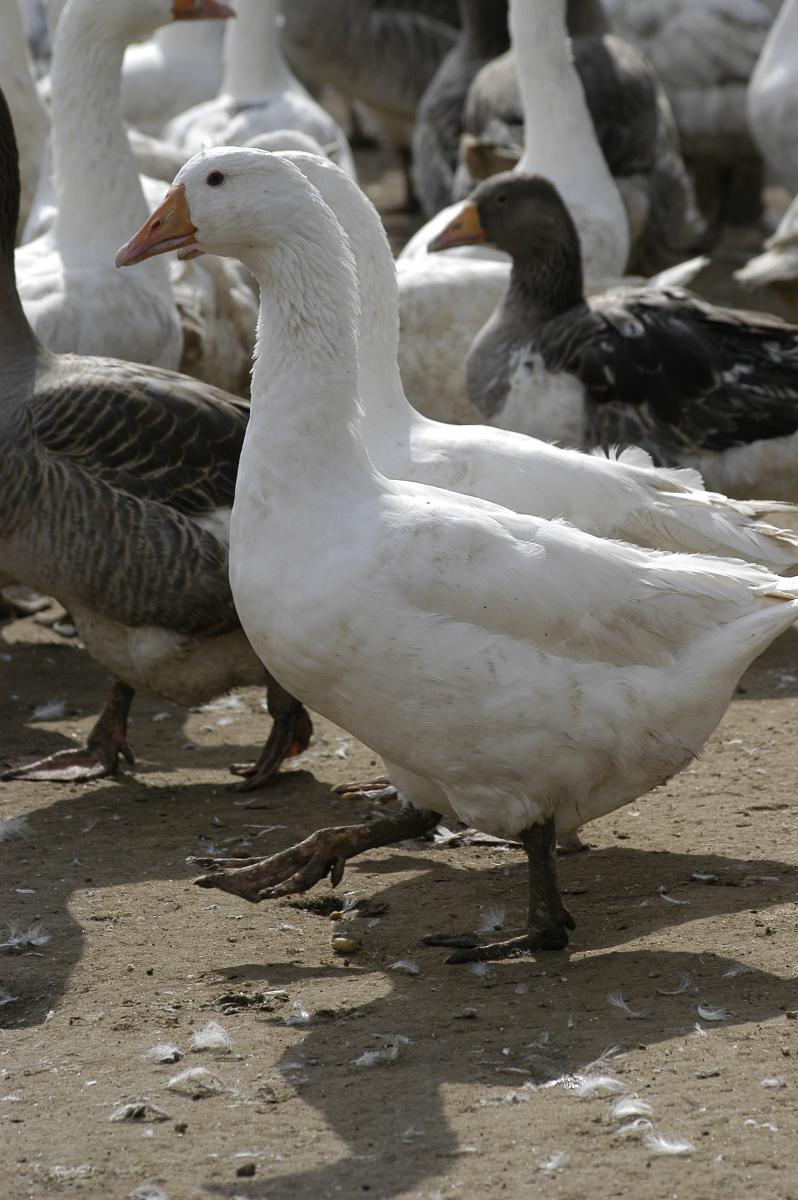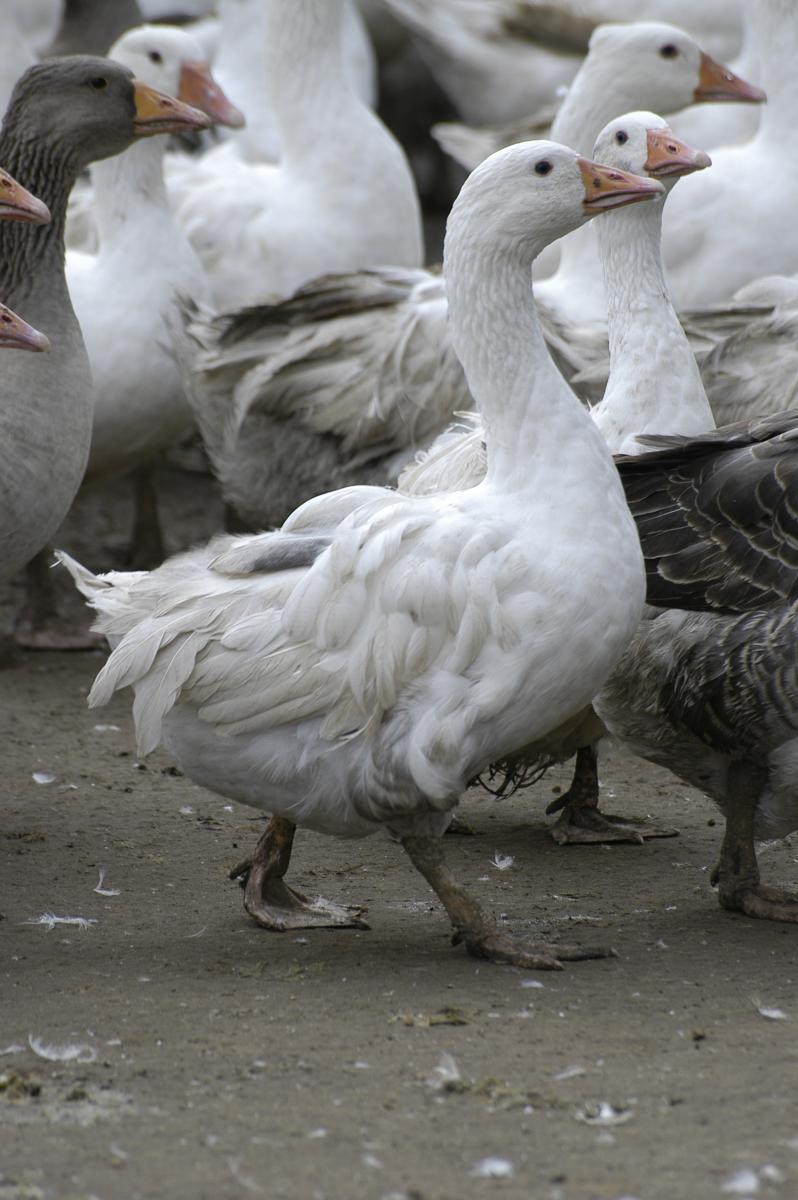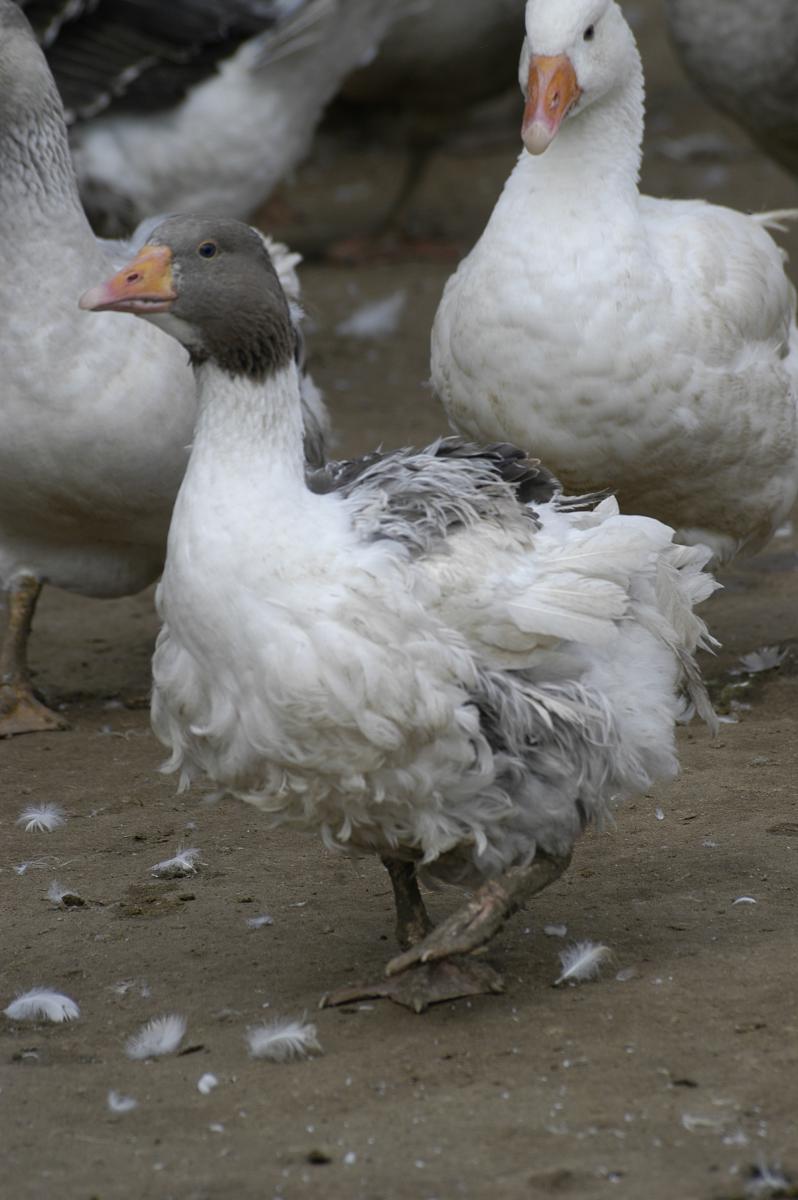Old Hungarian Goose Breeds
The Hungarian Goose occurs in white, grey and spotted colour variants of plumage, as well as there is a frizzle feathered variety of it. The white variant used to be the most common. The beak is orange-coloured, which gets darker in older age. Feet are red. It is a medium-sized breed, the body weight of the gander is 6 to 8, and that of the female is 5 to 6 kg. The trunk is elongated and moderately deep. Breast is round, back is long, broad and horizontal and just slightly and evenly inclines backwards. Neck of gander is long, strong and slightly curved. Neck of female is somewhat shorter and thinner and less curved. Legs and feet are strong. The Hungarian goose used to be an unpretentious, fast growing, well feathering, hardy and tirelessly grazing breed. It was not demanding regarding the quality of pasture and had very good feed conversion ability. It produced a soft meat of excellent quality and its big liver was appreciated in foreign markets, as well. It produced considerable amount of feather, it could be plucked three or four times a year. Annual egg production of the original Hungarian goose is around 15 pieces. Valuable, white feathered local varieties have been developed in the area of Lake Balaton, along the Danube and Tisza rivers as well as in the surroundings of Szeged, Makó, Szentes, Dunaszerdahely and Léva (Levice). Hungarian goose and its local varieties still can be found in small numbers; their conservation is one of the most important duties of goose breeders.

Hungarian Frizzle Feathered Goose
The origin of the Hungarian Frizzle Feathered Goose is not precisely known. It differs from the Hungarian Goose merely in the structure of feathers, but has saved all the other traits of that. First of all the contour feathers of the wing, and to a smaller extent, the feathers of the thigh and tail are long, soft and frizzling in a ribbon-like, spectacular way. The latter is caused by the division of the quill in its length into two. Frizzling is a dominant trait determined by a gene (F = frizzled), which results in partial dominance in heterozygotes. Different colour variants of the Hungarian Frizzle Feathered Goose are known, such as white, grey and spotted. Hungarian Frizzle Feathered Goose is one of the specialities of the Carpathian-basin. Due to its spectacular plumage standing off the body it used to be a favoured breed in certain part of the country. It is still widespread in Transylvania. Its different colour variants are maintained as indigenous Hungarian breeds in gene banks.

